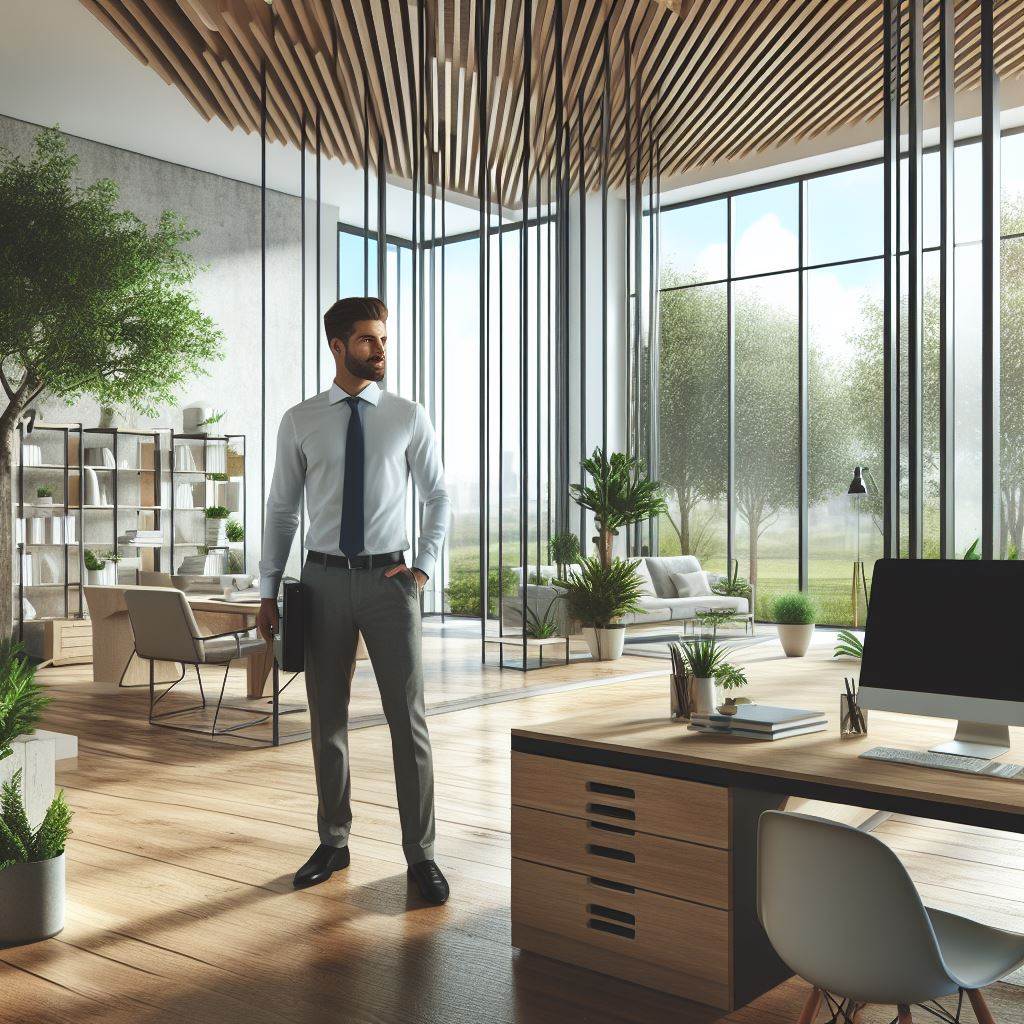Introduction
A mixed-use property is a type of real estate development that combines residential, commercial, and sometimes even industrial spaces within a single building or complex.
It provides a unique environment where people can live, work, and play in one convenient location.
It is important to discuss the pros and cons of mixed-use properties because they are becoming increasingly popular in urban areas.
While they offer many benefits, there are also potential drawbacks that need to be considered.
This blog post will provide an overview of mixed-use properties, explore their advantages and disadvantages, and offer insights into whether they are a suitable option for investors, residents, and business owners.
Definition and explanation of mixed-use properties
A mixed-use property is a versatile real estate development that combines residential, commercial, and sometimes industrial spaces.
Importance of discussing the pros and cons
Understanding the pros and cons of mixed-use properties helps investors, residents, and business owners make informed decisions.
Overview of what the blog post will cover
This blog post will explore the advantages and disadvantages of mixed-use properties and offer insights into their suitability for different stakeholders.
By discussing the definition, importance, and coverage of mixed-use properties, this blog post aims to provide a comprehensive understanding of this type of real estate development.
Read: Tech Impact on Commercial Properties
Pros of Mixed-Use Properties
Mixed-use properties offer numerous advantages that make them an appealing option for both residents and businesses. This blog section will explore the pros of mixed-use properties in detail.
Increased convenience and accessibility
- Having residential and commercial spaces nearby offers numerous benefits.
- Residents can save on commuting and transportation costs.
One of the key advantages of mixed-use properties is the increased convenience and accessibility they offer.
When residential and commercial spaces are located within close proximity, it brings numerous benefits.
Residents can enjoy the convenience of having shops, restaurants, and other essential services just a short walk away. This reduces commuting time and transportation costs significantly.
Enhanced livability
- Mixed-use properties provide opportunities for a diverse range of activities and services.
- Community interaction and engagement are promoted, leading to social benefits.
Mixed-use properties provide opportunities for a diverse range of activities and services in one area.
This enhances the overall livability of the neighborhood, as residents have easy access to various amenities.
From fitness centers and parks to medical facilities and entertainment options, everything is within reach.
Additionally, mixed-use developments often prioritize community interaction and engagement, fostering a sense of belonging and connectivity among residents.
Potential for increased property value
- Research shows that mixed-use developments tend to have higher appreciation rates.
- The presence of added amenities attracts tenants and potential property buyers.
Investing in a mixed-use property can be a wise decision, as it has the potential for increased property value over time.
Research shows that mixed-use developments tend to have higher appreciation rates compared to single-use properties.
The presence of added amenities, such as retail spaces, restaurants, and entertainment venues, attracts tenants and potential property buyers.
This increased demand can positively impact property values.
Sustainable and environmental advantages
- Mixed-use properties contribute to efficient land use, reducing urban sprawl.
- There is potential for reduced overall energy consumption and environmental impact.
Mixed-use properties also offer sustainable and environmental advantages.
By efficiently utilizing land, these developments help reduce urban sprawl and preserve open spaces.
When people live, work, and play in the same area, it reduces the need for long commutes, thereby lowering overall energy consumption and carbon emissions.
Additionally, mixed-use properties often incorporate green building practices, such as energy-efficient design and renewable energy sources, further minimizing their environmental impact.
Basically, mixed-use properties offer numerous benefits that enhance convenience, livability, property value, and sustainability.
The close proximity of residential and commercial spaces provides increased convenience and accessibility for residents while reducing transportation costs.
The diverse range of activities and services available in one area enhances livability and promotes community interaction.
Investing in mixed-use properties can lead to higher appreciation rates and attract tenants and buyers due to added amenities.
Furthermore, these developments contribute to efficient land use and reduce urban sprawl, resulting in potential energy savings and a reduced environmental footprint.
Read: Green Buildings: Future of Offices?
Cons of Mixed-Use Properties
Noise and congestion
- Residents may experience reduced quality of life due to potential negative impacts.
- Balancing the needs of commercial and residential spaces can present challenges.
Mixed-use properties offer numerous benefits, but they are not without their drawbacks. In this section, we will explore the cons of mixed-use properties and the challenges they bring.
Transform Your Real Estate Decisions
Unlock personalized real estate insights crafted just for you. Get actionable advice designed to amplify your success.
Get StartedA major downside of mixed-use properties is the potential for noise and congestion.
While the combination of commercial and residential spaces can create vibrant communities, the increased activity can negatively impact residents’ quality of life.
The constant movement and noise from commercial activities can disrupt the tranquility of residential areas, affecting residents’ comfort and well-being.
Balancing the needs of both commercial and residential spaces can be a tricky task, as the demands and preferences of each group may conflict with one another.
Increased competition and higher costs
- Mixed-use areas may lead to higher pricing, creating potential affordability issues.
- Limited space and potential restrictions pose competition problems for businesses.
Furthermore, mixed-use areas can give rise to increased competition and higher costs.
As these locations become popular and desirable, businesses may face the challenge of higher pricing.
The demand for limited space in mixed-use areas can also result in increased competition among businesses, leading to potential restrictions and difficulties in securing a suitable location.
This can be particularly problematic for small businesses and startups, as they may struggle to find affordable options or face barriers that limit their growth potential.
Zoning and regulatory challenges
- Obtaining permits and complying with zoning regulations can be complex.
- Conflicts between different stakeholders and interests may arise.
Zoning and regulatory challenges are another concern when it comes to mixed-use properties.
Obtaining permits and complying with zoning regulations can be complex due to the multiple uses and diverse interests involved.
Different stakeholders, such as residents, business owners, and local authorities, often have conflicting perspectives and objectives.
This can result in lengthy approval processes, bureaucratic hurdles, and potential disputes, making it harder for developers and property owners to navigate the regulatory landscape.
Potential for residential displacement
- Gentrification concerns may lead to the displacement of lower-income residents.
- Affordable housing provisions and inclusive development strategies are necessary.
The potential for residential displacement is also a significant con of mixed-use properties.
Gentrification, a common consequence of mixed-use development, can lead to the displacement of lower-income residents.
As property values in these areas rise, long-term residents may be priced out of their homes or face increased cost of living.
It is crucial to address this issue by implementing affordable housing provisions and inclusive development strategies that provide opportunities for all income brackets.
In summary, while mixed-use properties have undeniable advantages, they come with their fair share of cons.
The noise and congestion associated with commercial activities can disrupt the peace of residential areas, and balancing the needs of both sectors can be challenging.
Increased competition and higher costs can create barriers for businesses, and the complexities of zoning regulations can pose obstacles.
Moreover, the potential for residential displacement raises concerns about gentrification and the need for affordable housing provisions.
It is vital for developers and policymakers to carefully consider these cons and develop strategies to address them effectively.
Read: US Retail Spaces: Evolution & Trends

Case Studies and Examples
Real-Life Examples of Successful Mixed-Use Developments
- Hudson Yards, New York City: Hudson Yards is a prime example of a successful mixed-use development. It combines residential spaces, commercial offices, luxury retail, and cultural institutions, creating a vibrant and dynamic neighborhood.
- Pudong, Shanghai: Pudong is an exceptional mixed-use development that has transformed Shanghai’s skyline. It features a mix of commercial, residential, and recreational spaces, including the iconic Oriental Pearl Tower and Shanghai World Financial Center.
- Santana Row, San Jose: Santana Row is a popular mixed-use development in Silicon Valley. It offers a mix of high-end retailers, luxury residential units, office spaces, and entertainment options, attracting both locals and tourists alike.
Specific Pros and Cons Experienced in These Cases
Pros
- Increased Convenience: Mixed-use developments bring various amenities and services within close proximity, allowing residents and workers to easily access them without long commutes.
- Vibrant Community: These developments create vibrant communities by fostering social interactions between residents, workers, and visitors. People from different backgrounds come together, enhancing diversity and cultural experiences.
- Economic Benefits: Successful mixed-use developments can contribute to economic growth by attracting businesses, creating job opportunities, and increasing property values in the surrounding areas.
- Walkability: Pedestrian-friendly designs in mixed-use developments promote walking as a means of transportation, reducing reliance on cars and therefore decreasing traffic congestion and pollution.
- Utilization of Space: By combining different types of land use, mixed-use developments optimize the use of scarce land resources, making them more sustainable and environmentally friendly.
Cons
- Increased Density: Mixed-use developments often lead to increased population density, which can strain infrastructure and public services like transportation, schools, and healthcare facilities.
- Lack of Privacy: Living or working in a mixed-use development means being in close proximity to others, potentially compromising privacy and personal space.
- Noise and Traffic: The combination of residential, commercial, and entertainment spaces in a mixed-use development can lead to increased noise levels and traffic congestion, especially during peak times.
- Lack of Character: Some critics argue that mixed-use developments lack a unique and distinct character, with the focus being more on economic viability rather than creating a sense of place.
- Limited Housing Affordability: Mixed-use developments often feature upscale residential units, making them less affordable for lower-income individuals and families.
In summary, successful mixed-use developments like Hudson Yards, Pudong, and Santana Row demonstrate the potential benefits and drawbacks of such projects.
While they offer increased convenience, vibrant communities, and economic advantages, they also face challenges like increased density, potential privacy concerns, and traffic issues.
These examples serve as valuable case studies for future mixed-use developments, helping planners and developers in designing projects that maximize the advantages while minimizing the disadvantages.
Read: Retail Property Outlook: A 2024 Review
Conclusion
Recap of pros and cons discussed in the blog post
Mixed-use properties offer several advantages such as convenience, increased accessibility, and vibrant communities.
However, they also present challenges like potential conflicts, higher costs, and regulatory issues.
Encouragement for further exploration and assessment of mixed-use properties
Considering the potential benefits and drawbacks, it is essential to delve deeper into the specifics of each project and thoroughly evaluate its feasibility and compatibility with the surrounding area.
Final thoughts on the potential benefits and challenges of mixed-use developments
Mixed-use developments have the power to transform cities and create sustainable, dynamic communities. However, careful planning, collaboration, and ongoing evaluation are crucial to maximizing their success.




